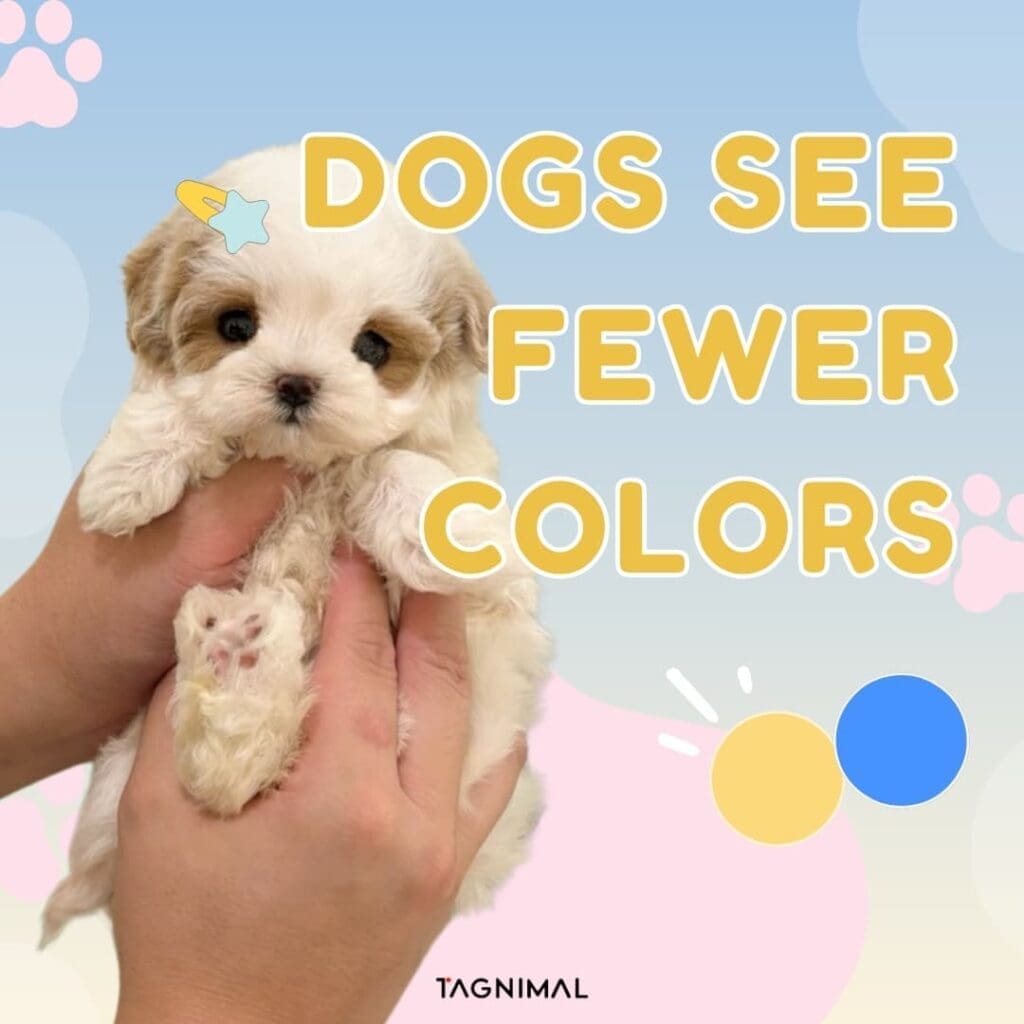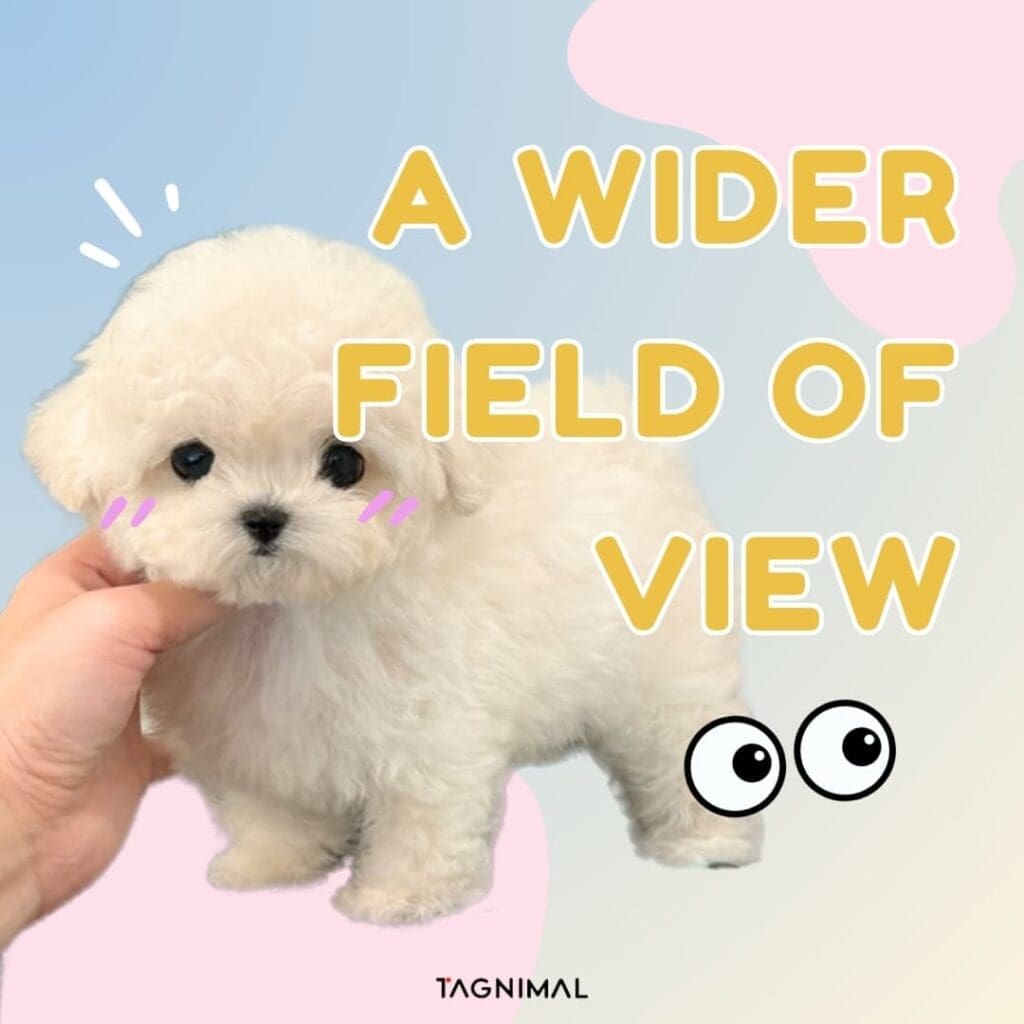Even though we all know that dogs have an excellent sense of smell, how about their vision? What is their field of view like? Let’s explore some interesting facts about dog’s vision that will help you better understand the world through their eyes!
1. Dogs See Fewer Colors
Dogs have dichromatic vision unlike humans, who can see a broad spectrum of colors. This means they can primarily see shades of blue and yellow. They have fewer color receptors, or cones, in their eyes compared to humans. What we perceive as red or green looks more like shades of gray to a dog. So, while their world isn’t entirely black and white, it’s much less colorful than ours
2. Dogs Excel in Low Light
Dogs have more rod cells in their retinas than humans, which allows them to see much better in dim light or at night. This ability is particularly useful since dogs are descendants of wolves, who often hunt during dusk or dawn. This means your dog can likely navigate better than you can during nighttime walks.
3. Quick to Spot Movement
Dogs are incredibly sensitive to movement, much more so than humans. They can detect the slightest motion from a distance, which is one reason why dogs often react to small movements that humans might not even notice. This is a survival trait from their ancestors, who relied on spotting movement to hunt prey.
4. Narrow Depth Perception
While dogs are great at detecting movement, their depth perception is not as sharp as humans. Because their eyes are set further apart on their head, their field of vision is wider, but their binocular vision (the overlapping field of view from both eyes) is more limited. This can make it harder for them to judge distances as accurately as humans do.
5. Limited Detail in Vision
Dogs are near-sighted compared to humans. While we can see objects clearly from a distance, dogs can only focus well on things that are closer to them, typically within 20 feet. Anything beyond that distance appears blurry. However, their enhanced sense of smell often compensates for this limitation.
6. A Wider Field of View
One advantage dogs have over humans is their wider peripheral vision. Depending on the breed, dogs can see up to 240 degrees around them, compared to humans’ 180-degree field of view. This gives them a broader visual range, allowing them to detect things happening at the edges of their vision.
7. Rely on Smell More Than Sight
Though dogs do rely on their vision to a certain extent, their primary sense is their sense of smell. This is why dogs often sniff the ground or air before reacting visually. Their world is experienced much more through scent than through sight, and they often use both senses in combination to navigate their environment.
Conclusion
While dogs don’t see the world the same way humans do, their vision is uniquely adapted to their needs. With excellent night vision, a keen sense of detecting motion, and a wide field of view, dog’s eyes are perfectly suited for their lives as hunters and companions. So, next time you’re playing fetch or going on a walk at night, remember that your dog’s visual world is different, but no less remarkable than your own!










